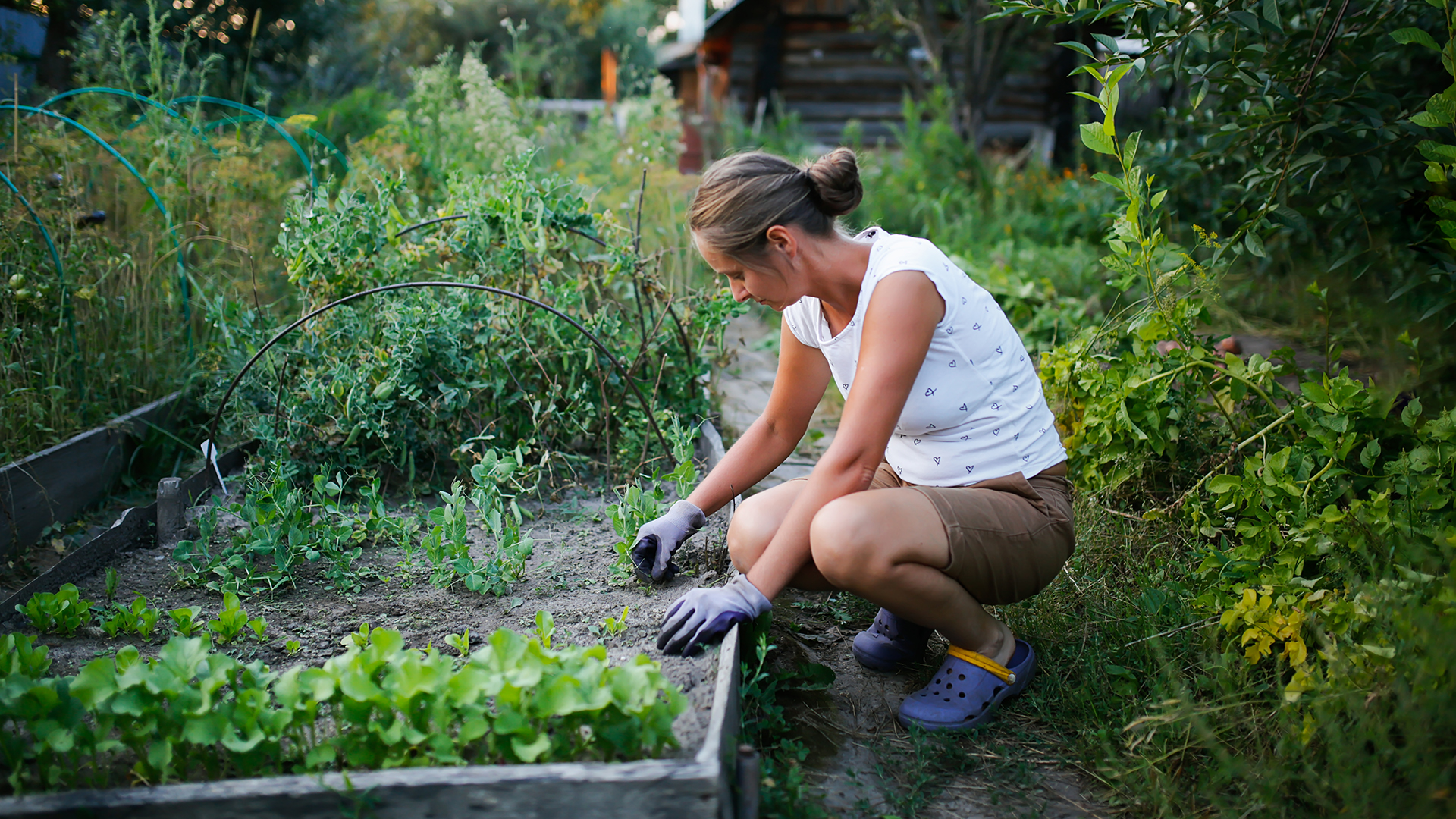Not all weeds are created equal. Half the battle when trying to eradicate weeds from your backyard is knowing what you are up against. So knowing about different types of weeds is vital before you start trying to get rid of them and stop them reappearing.
There are several methods of weed eradication and prevention; some will work better for certain types of weeds. A quick fix when tackling weeds is investing in one of the best electric weed eaters - which will chop off their heads and stop them flowering and spreading seeds.
In this article we will list the 10 most common types of weed and how you can try to tackle them, so you will have some knowledge in your armory in the battle against the weeds! As with so many things when gardening, not every method will work in every backyard, so there may well be some trial and error involved.
Types of weeds
1. Dandelion (Taraxacum)
This broadleaf weed is easy to spot in your lawn, as it doesn’t look like grass! It’s even easier to spot when they flower - the bright yellow blooms might look pretty, but leave them to go to seed and those fluffy parachutes will spawn new plants all around your yard. To get rid of them, you can dig them out - but be aware they have incredibly long taproots. A daisy grubber or weedpuller is a useful tool for this job. A herbicide made for broadleaf weeds is another option.
2. Lambsquarter (Chenopodium album)
This summer annual weed can spread disease in crops, so you don’t want it in your vegetable patch. In large quantities, it can be poisonous to some animals. You can identify it by its diamond-shaped leaves, with a white underside. Catch it while it is still young and you can probably pull it out of the ground by hand, but older weeds may need to be dug out.
3. Crabgrass
You’ll spot crabgrass when you see oddly colored leaves in your lovely green lawn. If you don’t catch it early, it will spread out (it sprawls rather like a crab’s legs), and ruin your lawn. You’ll also see it along your fence line, at the edge of your yard - in fact in any patch of soil it can find. And one plant can become many - a single weed can produce up to 150,000 seeds!
You can attack it by hand, targeting the crabgrass in late spring, and ensuring you pull out the roots. You will need to weed regularly (after rainfall is ideal, as the soil is moist and soft) to keep it under control.
Keeping your lawn healthy is half the battle in the fight against crabgrass - and you can apply a pre-emergent herbicide in early spring - but only on established lawns. Crabgrass will die off in the first frosts - but it will already have dropped its seeds, ready for a fresh offensive the following spring.
4. Quackgrass (Elymus repens)
Similar to wheat, this is a blue-green grassy perennial that appears in dense clumps. It is most common in spring and autumn. You'll need to pull it out by hand, ensuring you get all the roots, if you want to prevent it from reappearing.
If you have a large area of this pesky weed, you could cover the whole area with black plastic or weed membrane to ‘suffocate’ it. As a last resort, you can use a herbicide, but you will need to be careful with application to avoid affecting surrounding plants.
5. Ragweed
Ragweed is a broadleaf annual weed that may look quite attractive with its yellow flowers, but it is not so pretty for hayfever sufferers. One plant can be responsible for setting a billion pollen grains loose! If it appears in your lawn, the solution is to mow regularly (if you’re a hay fever sufferer, you might want to wear a mask to protect yourself).
In the flower bed, pull them up by hand - making sure you get as much of the roots and rhizome as possible. Wear gloves for this task as you risk an allergic reaction otherwise. In the vegetable garden, they can be tackled with a hoe - the young plants will be easier to root out, the older ones may take some work.
Horticulturist and farmer Stan Miklis says: “Bermuda Grass is also called Devil Grass. It is the most prevalent lawn grass in the south and a prime feed for cattle and horses. But in a flower bed it is a menace. Pulling by hand breaks the roots and further causes regeneration. Chemical sprays are problematic. The answer to weed control is good soil management. A healthy soil favours the preferred plant specimens and unhealthy soil grows weeds. Mulch, nutrition, water, and shading make a healthy soil. Tilth with organic materials aids in water percolation. Have a happy soil/have a happy life!”
6. Creeping Charlie/Ground Ivy
Another weed that looks quite pretty, with its blue flowers and mint-scented leaves. It's the scent that gives it away - it comes from the mint family and anyone who has had mint take over their herb garden will know how invasive it can be! You’ll find it in shady areas under trees and shrubs. It loves poor soil and patchy grass.
Wait until after a rainfall to pull it out, as the soil will be loose. You’ll find yourself tugging on a whole ‘vine’. Endeavor to get as much as you can, as it will regrow from any part left behind. If you have a large area of growth, try suffocating it by laying down a sheet of black plastic or weed membrane. To stop it coming back, plant the weed-free area with a grass that will grow in the shade - ask at your garden supply store for advice on varieties for your area - or you could try fertilizing the soil and making sure it gets more sunlight.
7. Prostrate Pigweed
This annual weed hails from the amaranth family. It is an annual plant, but can reappear year after year. Its leaves range from pale green to dark shiny green, and it forms dense circular mats thanks to its long stems that hug the ground. It can appear in lawns, as well as elsewhere in your yard, and the best way to get rid of it is to pull it by hand. Try to get to the plants while they are small, as they will be easier to pull up. If all else fails you can use a broadleaf herbicide.
8. Bindweed
This weed loves areas of poor, dry soil - and will wind itself around anything in its way - shrubs, perennials, trees etc. You’ll identify it by its winding stems and trumpet-shaped flowers in blue or white. As well as spreading quickly above ground, it also sends its roots up to 9ft deep, which is why it is so resistant to herbicides.
If an area is taken over by bindweed, dig up as much as you can (using a garden fork or weeding tool) - be aware that any left behind will regrow. If it is an area empty of plants you want to keep, you are best advised to cover with black plastic or weed membrane to kill it off before planting anything else.
9. Broadleaf Plantain
This weed grows prostrate to the ground, grabbing hold with fibrous roots as well as one long taproot. Its broad green leaves form a mat on the ground.
It loves compacted soil, so once you have got rid of it, you need to sort that out to stop it coming back - you need to aerate the soil and add a compost topdressing. To get rid of the plants, pull it out using a weed pulling tool. It is also possible to use a spot chemical spray - in spring and fall.
10. Chickweed
A common sight in lawns and backyards, there are two kinds of chickweed. Mouse-ear chickweed (Cerastium vulgatum), will be spotted growing in dense, low-lying clumps around gardens or in lawns. Easier to control is the annual common chickweed (Stellaria media).
The good news is that both of them have shallow roots, so are easier to pull up. You must be careful with mouse-ear chickweed that you pull up the entire root, or it will simply regrow.
The best way to tackle this weed is to keep weeding regularly, but if you are finding it hard to get it under control you could use a herbicide - the best time is early spring before the seeds are able to germinate.
Discover more guides for the garden...

